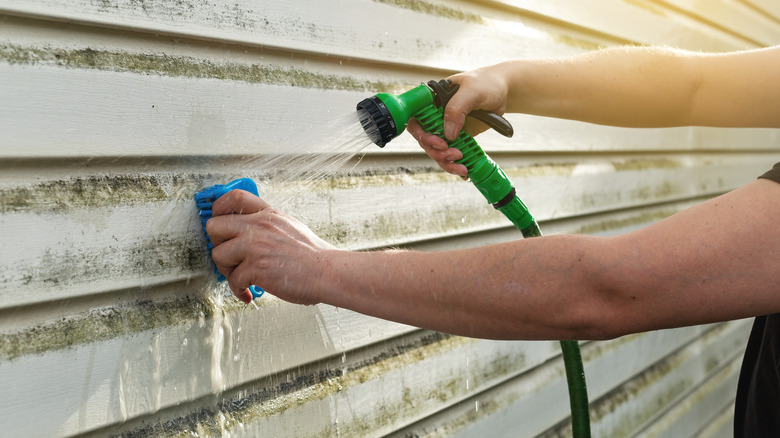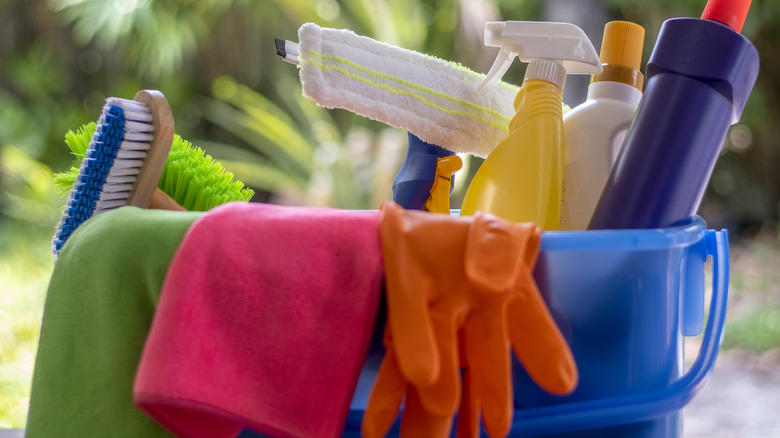The Common Cleaning Tools You Should Never Use On Vinyl Siding
We may receive a commission on purchases made from links.
It might be easy to assume that cleaning vinyl siding requires a bit of TLC, especially when grime and mildew have already started to build up. But before you reach for the heavy-duty brush or power washer, you may want to rethink how you've been cleaning your home's siding. Despite its tough looking exterior, vinyl siding is more delicate than it appears — and using the wrong cleaning supplies can lead to some serious damage. The satisfaction of tackling tough stains may feel good at the moment, but you could be etching scratches into the surface, weakening the siding's protective layer, or even loosening panels in the process. In short, it's not worth the risk to use the wrong tools on your home's exterior.
Abrasive tools are among the biggest culprits. Steel wool, metal brushes, and rough scrubbing pads can leave behind permanent damage on your home. Even stiff-bristled brushes, while useful on other surfaces, can scuff vinyl siding and wear away the UV-protective coating. Power washers, though often marked for use on a home's exterior, are always tricky—they can warp panels, force water between siding, and encourage mold growth inside your walls. And it's not just about tools. Cleaning solutions loaded with bleach or acetone can eat away at the finish and cause discoloration. While vinyl is relatively low maintenance, that doesn't make it invincible. Taking a more careful approach with the right equipment helps preserve the material's look and structure for years to come. When in doubt, err on the side of caution and stick with a household favorite to clean your vinyl siding. You'll get your siding clean without turning it into a future repair job.
The do's and don'ts of cleaning vinyl siding
There's a simple rule to follow when it's time to clean your exterior siding: avoid anything that seems too harsh. That includes both chemicals and tools. Don't use wire brushes, scouring pads, or even scrub sponges with the rough side. These tools can scratch the siding's surface, making it more prone to dirt buildup and sun damage over time. High-pressure washers should be used cautiously around vinyl siding, if at all. If the pressure is too intense or the angle is wrong, water can get behind the siding, leading to hidden moisture issues that threaten the structural security of your home. Equally important is what goes into your cleaning solution. Steer clear of anything with industrial-grade solvents like acetone or undiluted bleach. These chemicals can break down the protective coating on your vinyl siding, leaving permanent stains in the process.
So what should you use? Start with a bucket of warm water, a few drops of mild, liquid dish soap, and a microfiber cloth or soft-bristled brush. This combination is strong enough to remove most common debris without damaging your siding in the cleaning process. For tougher spots, you can try vinyl-safe cleaners that are labelled for exterior use like 30 Seconds Outdoor Cleaner. High on the list of top tools for cleaning vinyl siding is something that every homeowner has in their armory: a garden hose. A spray nozzle on the end is typically all you need to remove any remaining suds. By skipping abrasive tools and harsh chemicals, you're extending the life of your vinyl siding and maintaining its fresh appearance. Clean it properly and your home's exterior will shine for years to come.

